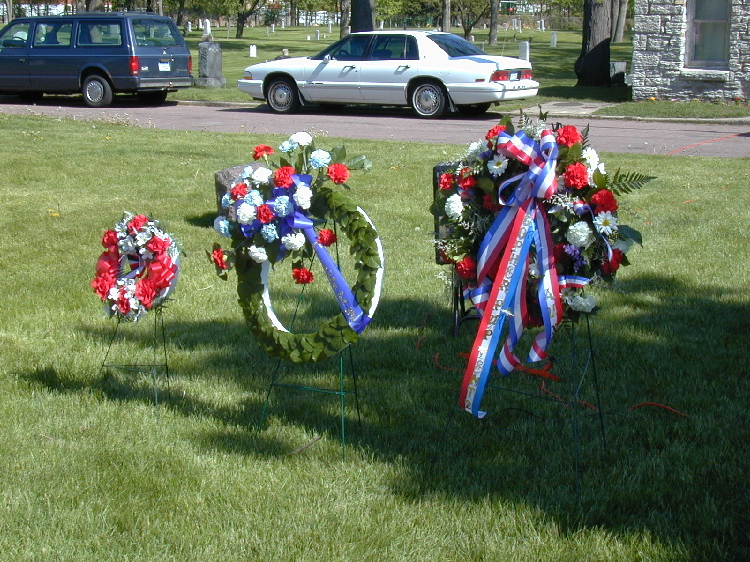 |
Minneapolis Pioneers and Soldiers Memorial Cemetery History Page Alley Article |
| Home | Burial Search | Friends | History | Photo Gallery | Visitor Information |
| Alley Articles |
|
This article originally appeared in the Phillips community's Alley Newspaper, May 2007. In the second act of Thornton Wilder’s play, “Our Town,” the fictional Stage Manager walks through the cemetery in Grover’s Corner, New Hampshire pointing out the graves of various townspeople. He directs the audience’s attention to a section of the cemetery where the Civil War veterans are buried and remarks:
Although the characters in Wilder’s play are fictional, he could easily have been writing about Jacob Ela, one of the 160 Civil War veterans buried in Minneapolis Pioneers and Soldiers Cemetery. Fortunately, Jacob was not one of those who “died about it.” Jacob and his family members, with one exception, were the kinds of people that our high school civics teachers hoped that we would all grow up to be--they were the very definition of civil responsibility and good citizenship. Between 1650 and the end of the Civil War, at least one member of the Ela family was present at every major event in American history—from the Salem witchcraft trials to the Battles of Lexington and Bunker Hill, to Gettysburg and, finally, to the surrender at Appomattox. The first member of Jacob’s family to live in what was to become the United States, and the closest thing that the family had to a black sheep was Daniel Ela. In the mid-to-late 1600s, he was arrested for public drunkenness and domestic abuse. He was sued by one of his neighbors for suggesting that the neighbor in question might be a witch; it was the kind of loose talk that got people hanged. The rest of the family was considerably more respectable, and considerably less flamboyant. Six of Jacob’s relatives served in the militia during the American Revolution, including one who rode out to warn the countryside that the “Regulars” were coming. The family was related by marriage to John Greenleaf Whittier, a Quaker poet and abolitionist. Richard Ela, another family member, worked with the Underground Railroad movement in Wisconsin. At least twenty members of the Ela family served in the Civil War; four of them died while in the service. Jacob was 18 years old when he enlisted. He only served eight months, but that was long enough for him to witness one of the bloodiest battles of the war, the Battle of Fredericksburg. Shortly after that, he was discharged for a disability. He lost the use of his legs for three years, got better, but never fully recovered. He returned to his parents’ farm, was married and (presumably) divorced. Jacob moved to Minneapolis in 1885 and worked as a traveling salesman, selling farming implements in Minnesota and North Dakota. Other than that, little is known about him. He seems to have gone about his life like so many other members of the Ela family, quietly and responsibly. He died 102 years ago, on May 5, 1905, at the age of 71. At the time of his death, the name of his military unit was unknown, so he was buried in an unmarked grave. We now know that Jacob served in Company G of the 11th New Hampshire Infantry, and he is now eligible to receive a military marker. Join us in remembering Jacob and all of the others buried in Minneapolis Pioneers and Soldiers Memorial Cemetery. A traditional observance, with re-enactors from the 1st Minnesota Volunteer Infantry, will take place at 10 a.m. on Monday, May 28th. A talk, with an optional walking tour, will take place at 1 p.m.
First Article -> Oscar Vaughn -- December 2003 |
|
©Friends of the Cemetery, 2005-2008 Contact us at history@friendsofthecemetery.org |
File last updated: Monday March 10, 2008 |
